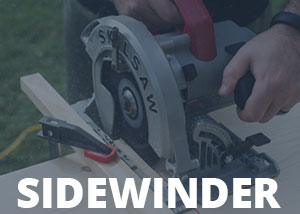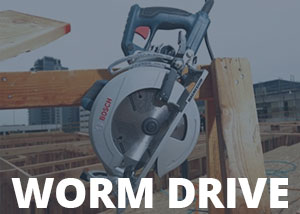Best Hypoid Circular Saw Reviews
Whether you’re a pro contractor or DIYer — hypoid saw units deliver the ultimate power out of all the machines in the circular saw category. Powered by innovative hypoid gearing, these mighty tools boast unmatched efficiency and a smoother cutting experience — when compared with worm drives and sidewinders. Tackling thick and dense materials with ease, and requiring minimal maintenance, these grunty powerhouses excel at hardcore, time-intensive projects — whether at home or on the work site.
| IMAGE | PRODUCT | DETAILS | ||
|---|---|---|---|---|
|
Best Lightweight Hypoid Saw 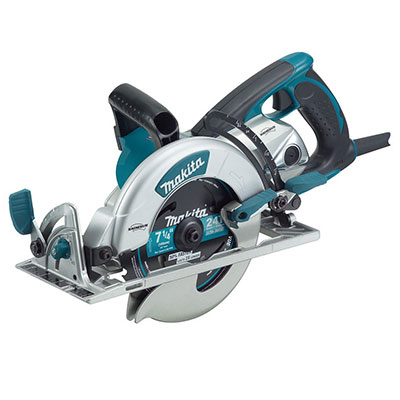
|
Best Lightweight Hypoid Saw
|
Makita 5377MG
|
Features
Product Rating: 4.5/5 |
Check Price at AmazonMakita 5377MG Review Makita 5377MG Review |
|
Best for Dense Materials 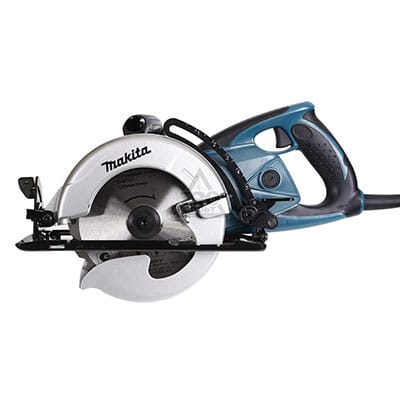
|
Best for Dense Materials
|
Makita 5477NB
|
Features
Product Rating: 4.7/5 |
Check Price at AmazonMakita 5477NB Review Makita 5477NB Review |
Best Hypoid Saw Buying Guide
When your trade or home projects demand immense cutting power — you need to reach for a hypoid saw. Designed to combine brawn with precision, these mighty circular saw tools utilize innovative hypoid gearing to provide the ultimate in efficiency while requiring little-to-no maintenance.
Slicing through thick and dense materials such as lumber, plywood, metal roofing, and oriented strand board (OSB) — they’re ideal for heavy-duty jobs where accuracy, reliable grunt, and continuous torque are needed.
These modern machines also incorporate extensive user-friendly features — such as ergonomic handles, weight-saving materials, and anti-vibration tech. And, with tiltable blades through 90 degrees — you can angle the cutting edge to perfectly address your timber.
Admittedly, these muscular units are heavier than their worm drive and sidewinder counterparts — and slightly harder on your pocket. However, for users demanding performance and longevity, no other circular saw comes close.
When choosing your hypoid circular saw, consider:
- Power output.
- Ease of operation.
- Design and build materials.
- Weight.
- Grip.
- Safety features.
Before You Buy: How a Hypoid Circular Saw Works
To find the best hypoid for your needs, I believe it’s helpful if you grasp the basic mechanical principles behind these tools. So, take a moment to read the following.
Gearing
These machines use hypoid gears — basically non-parallel and non-intersecting gears — that use motor power to drive the cutting edge. In contrast to typical sidewinder saws, (where the motor is positioned behind the blade), hypoid saws have a motor located at right angles to the cutting edge.
The specifically engineered spiral design of the gears permits increased contact area of the rotating teeth — ensuring the ultimate in torque and power.

Maintenance
While worm-drive saws and sidewinder saws require regular oil changes — hypoid machines don’t. This is because their gears are permanently sealed in a lubricating oil bath — meaning minimal maintenance for the DIYer or trade pro.
How To Choose the Best Hypoid Circular Saw
To avoid buying an unsuitable unit, you need to consider the features and capabilities of these power tools.
Below are the important factors you should think about when buying your hypoid saw — to ensure that it meets your preferences and the demands of your projects
Power
Generally speaking, the majority of hypoid saws boast a powerful 15-amp motor — sufficient to drive through dense materials. I’d suggest steering clear of machines with lower grunt, unless you’re planning to cut undemanding mediums.
Furthermore, consider the speed and torque of your machine. At the very least, go for units that knock out around 4400 RPM or higher. That said, bear in mind that the higher the speed, the lower the torque or grunt — it’s a trade-off between the two metrics.
So, think about whether your home or trade jobs require a fast-spinning blade or pure brawn.
Ease of Operation
Look for units that have large, easy-accessible rubberized bevels and offer tool-less adjustment. They will save you costly downtime by preventing you from searching for a wrench — and permit effortless angled cutting
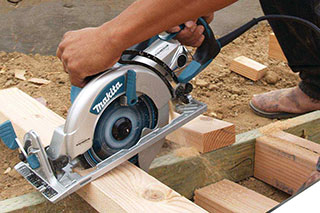
Design and Build Materials
All hypoid machines might look similar — but they typically have important design differences.
Units with magnesium parts are significantly lighter and sturdier than steel machines — but they’re harder on your wallet. What’s more, consider the vibration level — high torque and RPMs mean significant oscillation, which can cause pain and fatigue. Look for tools with cushioned grips, rubber buffers, and anti-vibration tech.
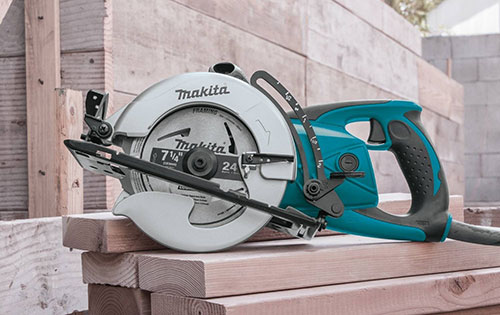
Weight
Hypoid machines range in heft from 11 to 15 pounds. If you’re using your machine for extended periods, fatigue could become an issue.
Therefore, aim for a machine with a magnesium, or a slightly cheaper aluminum, build. Steer clear of heavy steel units or fragile plastic tools.
Grip
Many hypoid machines incorporate a rubbered and textured grip — boosting stability and permitting comfortable operation, especially when wielding the tool with gloved or sweaty hands.
In addition to elevating hand stability, these grips stave off fatigue by reducing vibration transfer to your hands and arms — allowing you to work harder for longer and get the job done.
Safety Features
Wherever possible, I recommend opting for a hypoid machine with the most safety features you can afford. These powerful units can present hazards, so any steps the manufacturer takes to prevent injury are welcome.
Accident-preventing features vary from model to model, but look out for:
- Electric motor brake — releasing the trigger causes immediate blade rotation cessation.
- Textured and padded grip — boosting comfort, and reducing the likelihood of slips.
- Safety lock — preventing inquisitive hands from accidentally starting up the machine.
- Blade guard — shielding you from the rotating cutting edge.
- Dust extractor — preventing dust from becoming airborne, saving your lungs and your eyes.
Makita 5377MG vs. 5477NB
The 5377MG is slightly harder on your pocket than the 5477NB, but for a reason.
Its premium magnesium components increase the price point slightly, but they mean a sturdier, lightweight, and more reliable build. The 5477NB model is a whole pound heavier due to the lack of these superior parts. And trust me, that extra pound can surprisingly cause you an increase in fatigue over time — especially if you’re using the hypoid saw for extended periods.
Both of these models boast heat-treated gears, designed to withstand intense work hours. The oil bath technology in both machines allows you to use the tool without having to worry about maintenance and lubrication changes. As far as other features go, such as cutting capacity, wattage, RPM, and blade diameter — they’re identical in both tools.
The 5377MG’s stability is directly affected by its lack of weight — increasing balance and user comfort. Furthermore, the design and ergonomics are nearly identical, with only some minor differences — the 5377MG model has a bigger front lever, which is rubberized to alleviate the hassle of fine-tuning the shoe.
In the end, which is better? In truth, it depends on your personal preferences and, most importantly, your budget. If you’re specifically looking for a lightweight yet effective machine, I would recommend investing in the model with magnesium parts. On the other hand, if that’s of little importance, the 5477NB model will do its job well and will cost you less.
Our Top-Rated Hypoid Circular Saws
Through extensive research, listening to expert advice, and using my own tool experience — I’ve found what I believe to be the two ultimate hypoid saws currently on the market.
Makita 5377MG Hypoid Saw

- Design
- Functionality
- Price
Boasting a modern magnesium build, the 5377MG hypoid saw from tool maestros Makita could be the perfect unit for pros and DIYers who demand grunt combined with lightweight construction.
It features a powerful 15-amp motor that can deliver up to 4500 RPM through its 7.25-inch carbide-tipped blade. It also incorporates compressed winding technology — keeping its overall size compact without compromising overall durability.
The ergonomics are more than acceptable — with an innovative use of materials. Clever engineers decided to utilize magnesium components, due to their hardwearing and lightweight characteristics.
Thanks to these super-light parts, the unit weighs just 13.2 pounds — impressive for a brawny machine. Furthermore, its well-thought-out construction provides welcome balance and stability — reducing user strain and increasing accuracy.
Internally, the gears are made of steel instead of traditional bronze alloy — offering longevity. Furthermore, its substantial rubberized levers alleviate the hassles of bevel adjustment — with positive stops at 22.5, 45, and 51.5 degrees.
Makita 5477NB Hypoid Saw

- Design
- Functionality
- Price
If you’re looking for a low-maintenance model that has the capacity to drive through the toughest and most stubborn of materials — consider this impressive tool from Makita.
Thanks to its sealed gear section and oil bath technology, the Makita 5477NB hypoid circular saw requires little cleaning, lubrication, or maintenance — making it ideal for the busy tradesperson or serious DIYer.
Additionally, its 15-amp motor with 4500 RPM drives its 7.25-inch carbide blade. This mighty brawn permits the machine to tackle sidings, laminate, framed walls, floors, roofs, and hardcore engineered lumber.
Unlike its sibling, the Makita 5377MG, this machine doesn’t incorporate magnesium components. And, although this increases the weight of the machine to a substantial 14.3 pounds — it’s easier on your bank account than the magnesium tool.
Control and operation are pleasingly effortless, with low vibration due to its rubberized hand grips. Being welcomingly oversized, they boost stability and precision. What’s more, its heat-dissipating blade protects the internals from excess temperatures, promotes user comfort, and shields against material burn and scorch.
Additionally, if you’re a pro or DIYer who demands angled cutting — it offers a bevel capacity of 0-51.5 degrees, with positive stops at 45 and 51.5 degrees.
Best Hypoid Circular Saw Conclusion
Hypoid saws are the kings of brawn in the circular saw category. Able to drive through dense materials, these grunty beasts are the go-to choice of the dedicated DIYer and trade professional.
My top pick is the Makita 5377MG — with its lightweight magnesium parts and pleasing balance. That said, the Makita 5477NB exhibits highly similar features in amperage, RPM, and blade size to the 5377MG — the only key difference being its greater weight and more affordable price point.
Whichever machine you choose, embrace unsurpassed cutting ability with one of the best hypoid saw tools!
Hypoid Circular Saw FAQs
Q: What Is a Hypoid Saw?
A hypoid saw falls in the circular saw category. It utilizes high-efficiency hypoid gears to transfer energy from the electric motor to the cutting blade. Exhibiting high levels of torque, they’re ideal for addressing dense mediums.
Q: What Materials Can You Cut With a Hypoid Saw?
As grunty units, hypoid saws can slice through dense, stubborn, and thick materials — including laminate, plywood, MDF, plastics, and hardcore engineered lumber.
Q: Are Hypoid Saws Used by Professional Carpenters?
Yes, they are! With low maintenance operation, impressive durability, accuracy, and brawn — hypoid saws are the choice of the discerning trade pro and dedicated DIYer.
Q: What’s the Difference Between a Sidewinder and Hypoid Circular Saw?
A sidewinder circular saw features a motor positioned behind the cutting blade, and a hypoid saw has the motor located to the side of the blade. Furthermore, hypoid saws use hypoid gears, while sidewinder saws utilize spur gears.
Q: How Much Do Hypoid Circular Saws Cost?
Incorporating modern technology, utilizing high-performance materials, and delivering exceptional brawn — hypoid saw units are the premium machines in the circular saw category, typically at higher price points than their cutting cousins.

